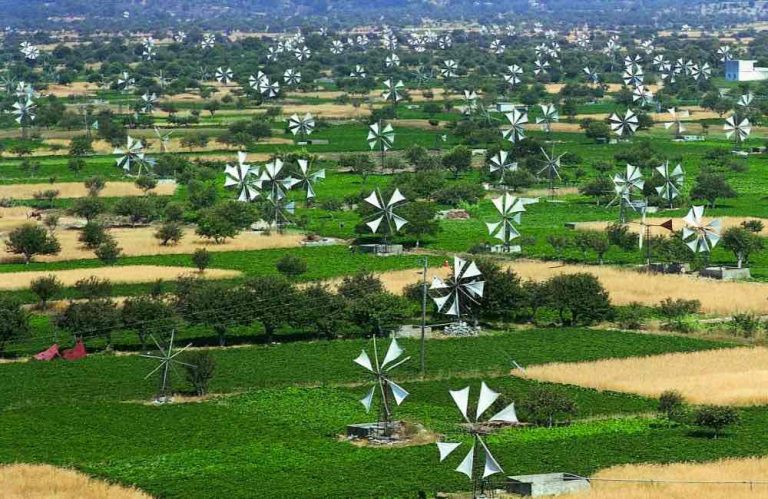Perched on Crete’s Lassithi Plateau, the sight of white windmills against the backdrop of the expansive agricultural plain offers a glimpse into an era where innovation harmonized with the rhythms of nature. These iconic structures, primarily used in the summer to draw groundwater for irrigating the plateau’s fertile lands, encapsulate a blend of historical ingenuity and ecological sustainability. Spanning approximately 25,000 kilometers, the plateau’s verdant expanse owes much of its agricultural bounty to these wind-powered sentinels.
A Testament to Venetian Engineering:
Dating back to 1464, the original windmills were the brainchild of Venetian engineers who sought to harness the plateau’s wind power for agricultural prosperity. This initiative marked a significant technological advancement during the Venetian period, laying the groundwork for the valley’s agricultural development. By the end of the 1800s, local innovations led to the construction of locally built windmills, which continued the legacy of utilizing natural resources for farming needs.
The Evolution of Windmills on the Plateau:
Although only a few of these white-plastered windmills are in operation today, their presence on the plateau serves as a reminder of a time when human ingenuity and the environment worked in concert. Initially powered by modest pumping engines and iron towers, these windmills were instrumental in supporting the livelihoods of local farmers. At their peak in the 1950s, around 4,000 windmills dotted the plateau, significantly aiding in the production of high-quality fruits and vegetables.
Transition and Renewed Interest:
With the advent of more efficient electrical irrigation pumps, the majority of the traditional windmills fell into disuse. However, a recent resurgence of interest in renewable energy sources and sustainable farming practices has sparked a revival in the appreciation for these windmills. Efforts to preserve and possibly refurbish them for modern use reflect a growing acknowledgment of the value of traditional ecological knowledge and practices.
Exploring the Lassithi Plateau:
Situated about 26 kilometers from Agios Nikolaos, with the plateau’s capital, Tzermiado, providing a gateway to this unique agricultural landscape, the Lassithi Plateau and its windmills offer visitors a fascinating insight into Crete’s cultural and environmental heritage. Accessible by coach over the 900-meter-high Diktean mountain pass, the journey to the plateau is as breathtaking as the destination itself, inviting travelers to explore the enduring legacy of Crete’s white windmills and the timeless beauty of the Lassithi Plateau.
Sorry, no records were found. Please adjust your search criteria and try again.
Sorry, unable to load the Maps API.
